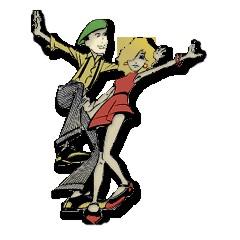| This photo is the properly of brizzle born and bredPaul Townsend |
One old English tradition is the game, and the rhyme,Oranges and Lemons. It is particularly associated with the 31st March.
In olden days, when the River Thames was mighty and wide, barges carrying oranges and lemons from tropical climates landed at the port of London. The docks were below the church of St Clement’s Dane (unless you listen to the counter-claim from St Clement's, Shoreditch.)
On the last day of March, local children attended a special service held at St Clement's Church. After the service, they were presented with an orange and a lemon. This photo, taken in 1944, showed that the tradition was continued even during the most difficult of times.
Oranges and lemons,
Say the bells of St. Clement's.
You owe me five farthings,
Say the bells of St. Martin's.
When will you pay me?
Say the bells of Old Bailey.
When I grow rich,
Say the bells of Shoreditch.
When will that be?
Say the bells of Stepney.
I do not know,
Says the great bell of Bow.
Here comes a candle to light you to bed,
And here comes a chopper to chop off your head!
Say the bells of St. Clement's.
You owe me five farthings,
Say the bells of St. Martin's.
When will you pay me?
Say the bells of Old Bailey.
When I grow rich,
Say the bells of Shoreditch.
When will that be?
Say the bells of Stepney.
I do not know,
Says the great bell of Bow.
Here comes a candle to light you to bed,
And here comes a chopper to chop off your head!
Although the two St Clement’s churches claim they were the one from the rhyme, as far as I can see there are lots of churches closer to the docks but few with a name that rhymes as well.
There are other regional versions of this rhyme listing other churches in their locale.
We had a teacher, who was determined to make sure the old playground games were encouraged and that they were not allowed to die out. I remember hoards of us playing this game on the playground. Two children made the bridge, that was ready to collapse at the end of the song, and everyone else jostled and ran to get through - under the bridge - and around again before the song got to the end and someone lost their head. ;)
DO YOU REMEMBER PLAYING PLAYGROUND GAMES? OR ANYONE WHO TRIED TO ENCOURAGE THIS KIND OF TRADITION TO SURVIVE?
TEACHERS have been told to defy the compensation culture by encouraging children to brave cuts and bruises and get stuck into traditional playground games.
The Local Government Association has issued councils with a top 10 list of break-time games they should support including British bulldog, tag, stuck in the mud, hopscotch, skipping, hide and seek, French elastic and marbles.
The Local Government Association has issued councils with a top 10 list of break-time games they should support including British bulldog, tag, stuck in the mud, hopscotch, skipping, hide and seek, French elastic and marbles.
 Jacob, nine, said: "I play tag, British Bulldog and football at school. We're not allowed to play conkers or marbles because they said it might be dangerous.
Jacob, nine, said: "I play tag, British Bulldog and football at school. We're not allowed to play conkers or marbles because they said it might be dangerous. 












